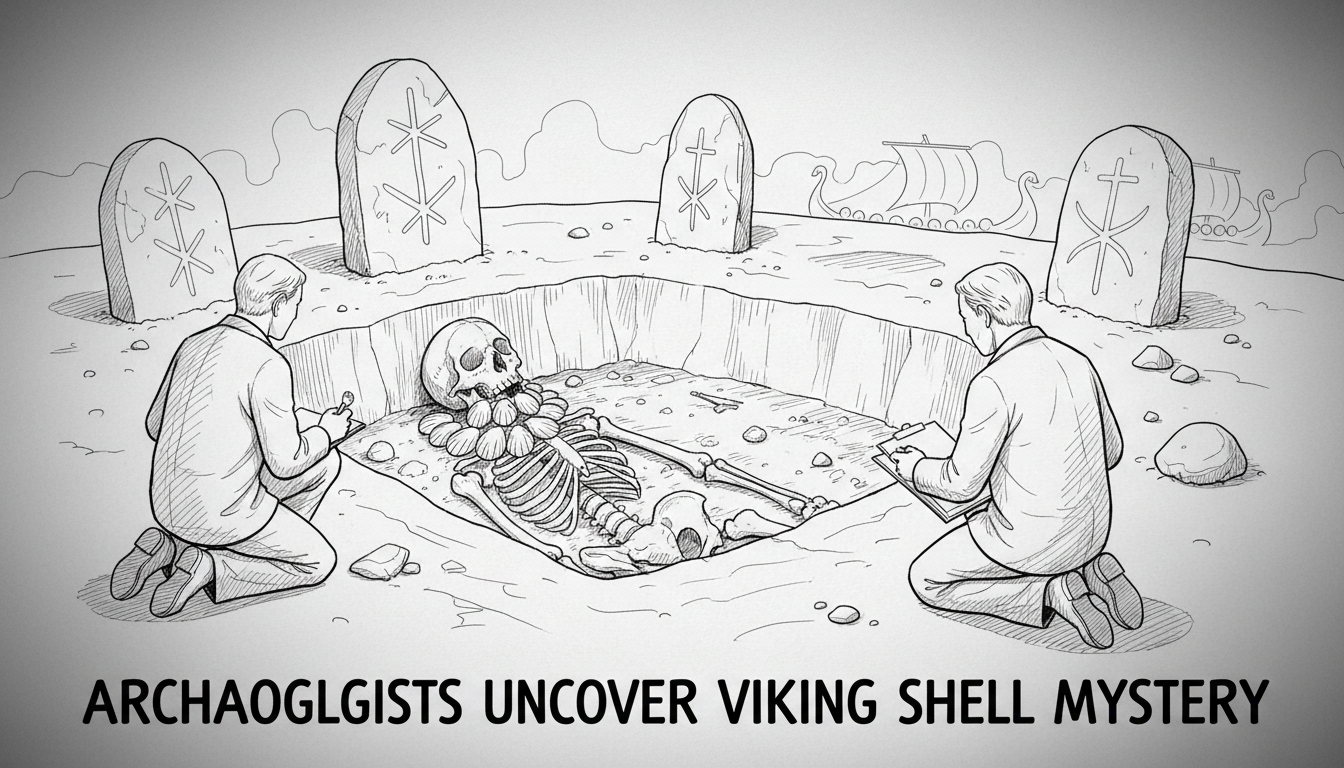Archaeologists in Norway have made an extraordinary discovery that reveals new insights into Viking Age burial practices. During a routine excavation in Ørland, researchers uncovered a nearly complete skeleton from the 9th century buried with traditional Viking jewelry and two large scallop shells placed mysteriously around the jaw.
The discovery came during what archaeologists thought was their final day of fieldwork. As they prepared to leave the site at Val in Oksvoll, they noticed something that made them pause their departure. Just 20 centimeters below the surface, they found a new grave containing an adult woman from the Viking Age.
Raymond Sauvage, the project leader from NTNU University Museum, described the moment he received photos of the find. The team had opened just one square meter for checking when they spotted the skeleton. Something unusual caught their attention immediately - scallop shells positioned on each side of the jaw with curved sides facing outward.
This woman was buried in full Viking dress with a complete jewelry set including two oval bowl brooches typical of married women in the farming aristocracy of that time. The jewelry placement provided rare insight into how Viking women wore their adornments since skeletons rarely preserve well in Norwegian soil.
The scallop shells present the biggest mystery. Sauvage searched historical records without finding any similar cases. While shell fragments appear in seven or eight graves on Norway's west coast, those excavations occurred over a century ago and researchers cannot determine if the shells were placed intentionally.
Scallop shells later gained Christian significance in medieval times connected to the pilgrimage to Santiago de Compostela in Spain. But this grave predates that Christian association by several hundred years. Sauvage suggests the shells likely held ritual meaning in Viking burial ceremonies where the dead were presented in specific ways to demonstrate family power and status to neighbors.
Researchers made another surprising discovery around the skeleton - small bird bones that likely represent wings sewn into clothing or a feather blanket. The shell-rich sandy soil at Ørland performed miracles in preservation since such delicate bones normally disappear quickly from Norwegian archaeological sites.
The grave's shallow depth of just 15-20 centimeters made it particularly vulnerable. A ditch dug through the foot of the grave in the 1960s or 1970s had already damaged the lower body and changed drainage patterns that began deteriorating the skeleton. Cultural heritage authorities provided emergency funding for a full rescue excavation, saving the find from likely destruction by modern farming equipment.
Dating evidence suggests this woman lived around 850 AD when Norway was taking its first steps into the Viking Age. Her high-status jewelry indicates she was likely the mistress of the farmhouse with authority over household management. Just ten meters away, archaeologists found another skeleton from the same period earlier this year. They now plan DNA testing to determine if the two individuals were related.
The farmland at Val may conceal more graves since Viking and Iron Age communities typically buried multiple generations in designated areas, similar to modern cemeteries. The cooperating farmer has worked closely with archaeologists to preserve the site while continuing agricultural work.
This discovery provides invaluable information about Viking Age burial rituals and social structures. The unusual shell placement and preserved bird bones offer rare tangible evidence of symbolic practices that usually disappear from the archaeological record. As analysis continues, researchers hope to uncover more details about this woman's life and the community she belonged to during Norway's early Viking period.

